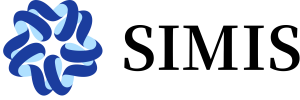Spin Geometry
Spin geometry sits at the vibrant intersection of differential geometry, global analysis, and topology, offering profound insights into the structure of manifolds through the lens of spinors and Dirac operators. This course explores how spin structures—refinements of Riemannian metrics enabling the definition of spinor bundles—unlock powerful tools for studying geometric and topological invariants.
Central to our journey is the Dirac operator, a first-order elliptic operator whose analytical properties encode deep topological information. We will investigate its role in the landmark Atiyah-Singer Index Theorem, which relates the index of Dirac-type operators to characteristic classes of the underlying manifold. This theorem not only unifies disparate results in geometry but also fuels applications across mathematical physics, including gauge theory and supersymmetry.
Drawing on foundational texts like Lawson and Michelsohn’s seminal Spin Geometry and Bär’s modern treatment, we will cover:
Spin and Spin^c structures on vector bundles,
Clifford algebras and spinor representations,
Spectral theory of Dirac operators,
Index theory (Dai, Nicolaescu) and its geometric consequences,
(Time permitting) Seiberg-Witten theory (Salamon) as a contemporary application.
The course assumes familiarity with Riemannian geometry, de Rham cohomology, and fiber bundles. By synthesizing perspectives from Hanke, Figueroa-O’Farrill, Walpuski, and Jiang’s notes, we aim to reveal spin geometry as both a unifying framework and an active research frontier, where analysis, algebra, and topology converge in elegant and unexpected ways.
Central to our journey is the Dirac operator, a first-order elliptic operator whose analytical properties encode deep topological information. We will investigate its role in the landmark Atiyah-Singer Index Theorem, which relates the index of Dirac-type operators to characteristic classes of the underlying manifold. This theorem not only unifies disparate results in geometry but also fuels applications across mathematical physics, including gauge theory and supersymmetry.
Drawing on foundational texts like Lawson and Michelsohn’s seminal Spin Geometry and Bär’s modern treatment, we will cover:
Spin and Spin^c structures on vector bundles,
Clifford algebras and spinor representations,
Spectral theory of Dirac operators,
Index theory (Dai, Nicolaescu) and its geometric consequences,
(Time permitting) Seiberg-Witten theory (Salamon) as a contemporary application.
The course assumes familiarity with Riemannian geometry, de Rham cohomology, and fiber bundles. By synthesizing perspectives from Hanke, Figueroa-O’Farrill, Walpuski, and Jiang’s notes, we aim to reveal spin geometry as both a unifying framework and an active research frontier, where analysis, algebra, and topology converge in elegant and unexpected ways.

Lecturer
Date
19th September ~ 12th December, 2025
Location
| Weekday | Time | Venue | Online | ID | Password |
|---|---|---|---|---|---|
| Friday | 13:30 - 16:55 | A3-3-201 | ZOOM 06 | 537 192 5549 | BIMSA |
Reference
1. Lectures on Dirac Operators and Index Theory (Xianzhe Dai)
2. Notes on the Atiyah-Singer Index Theorem (Liviu I. Nicolaescu)
3. Spin Geometry (Bernhard Hanke)
4. Spin Geometry (Christian Bär)
5. Spin Geometry (H. Blaine Lawson, Marie-Louise Michelsohn)
6. Spin Geometry (José Figueroa-O’Farrill)
7. Spin Geometry (Thomas Walpuski)
8. Spin Geometry and Seiberg–Witten Invariants (Dietmar Salamon)
9. Spin Geometry Lecture Notes (Shuhan Jiang)
2. Notes on the Atiyah-Singer Index Theorem (Liviu I. Nicolaescu)
3. Spin Geometry (Bernhard Hanke)
4. Spin Geometry (Christian Bär)
5. Spin Geometry (H. Blaine Lawson, Marie-Louise Michelsohn)
6. Spin Geometry (José Figueroa-O’Farrill)
7. Spin Geometry (Thomas Walpuski)
8. Spin Geometry and Seiberg–Witten Invariants (Dietmar Salamon)
9. Spin Geometry Lecture Notes (Shuhan Jiang)
Video Public
Yes
Notes Public
Yes
Language
English
Lecturer Intro
I obtained my Bachelor's and Ph.D. degrees from the University of Science and Technology of China. Before my current position as an assistant professor at BIMSA, I was a postdoc at Yau Mathematical Sciences Center, Tsinghua University. My research interests lie in using topological methods (cobordism) to study theoretical physics (anomaly).




